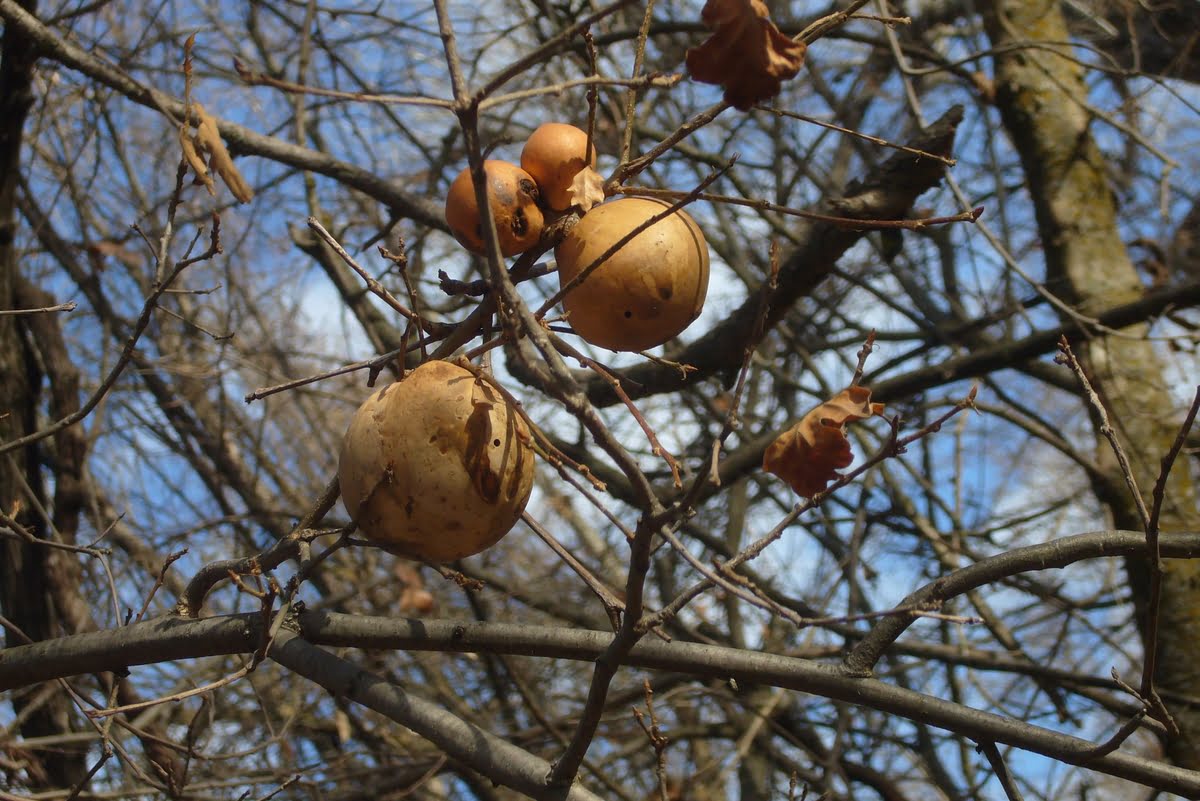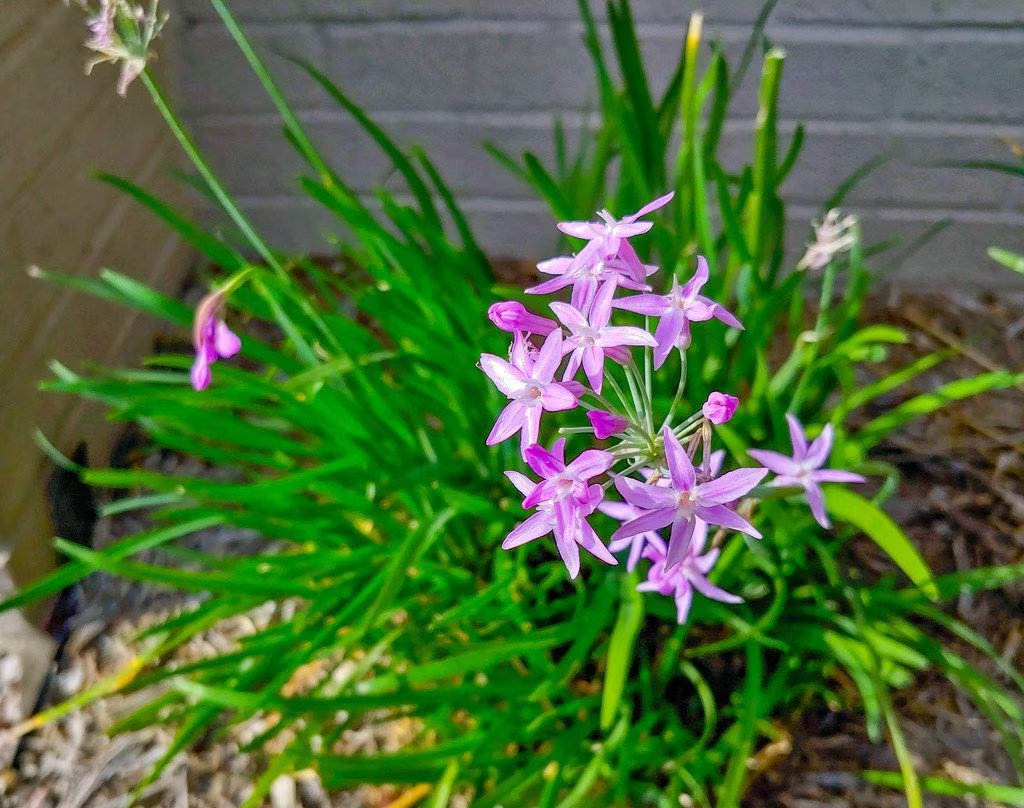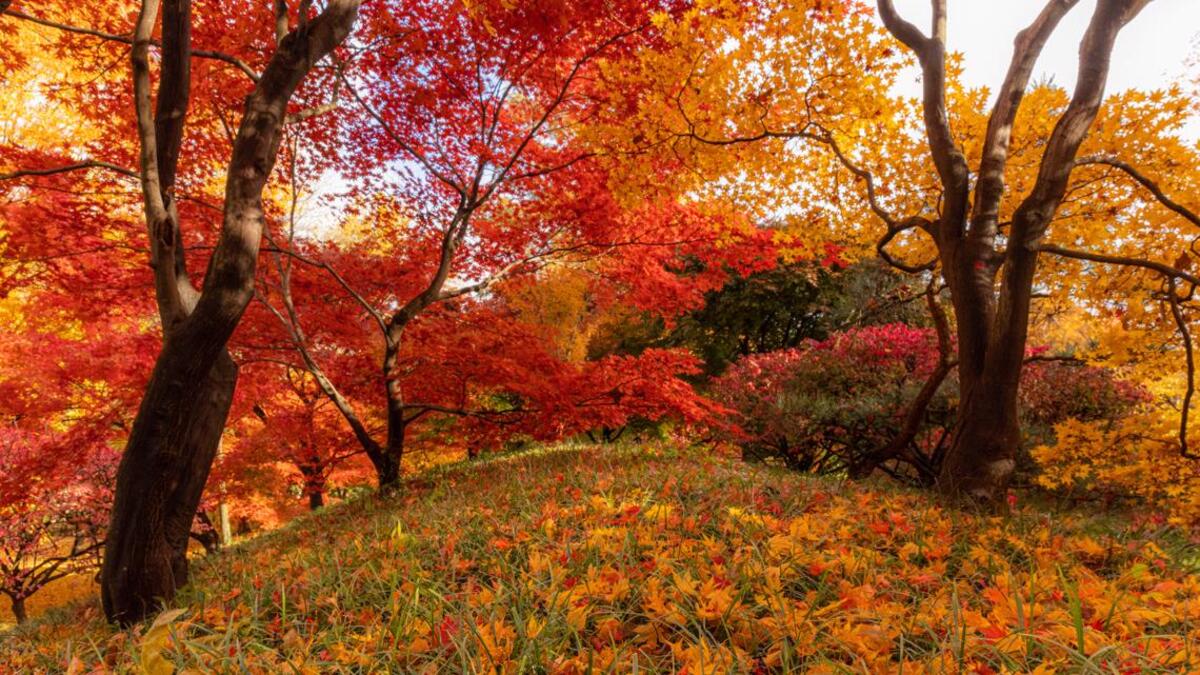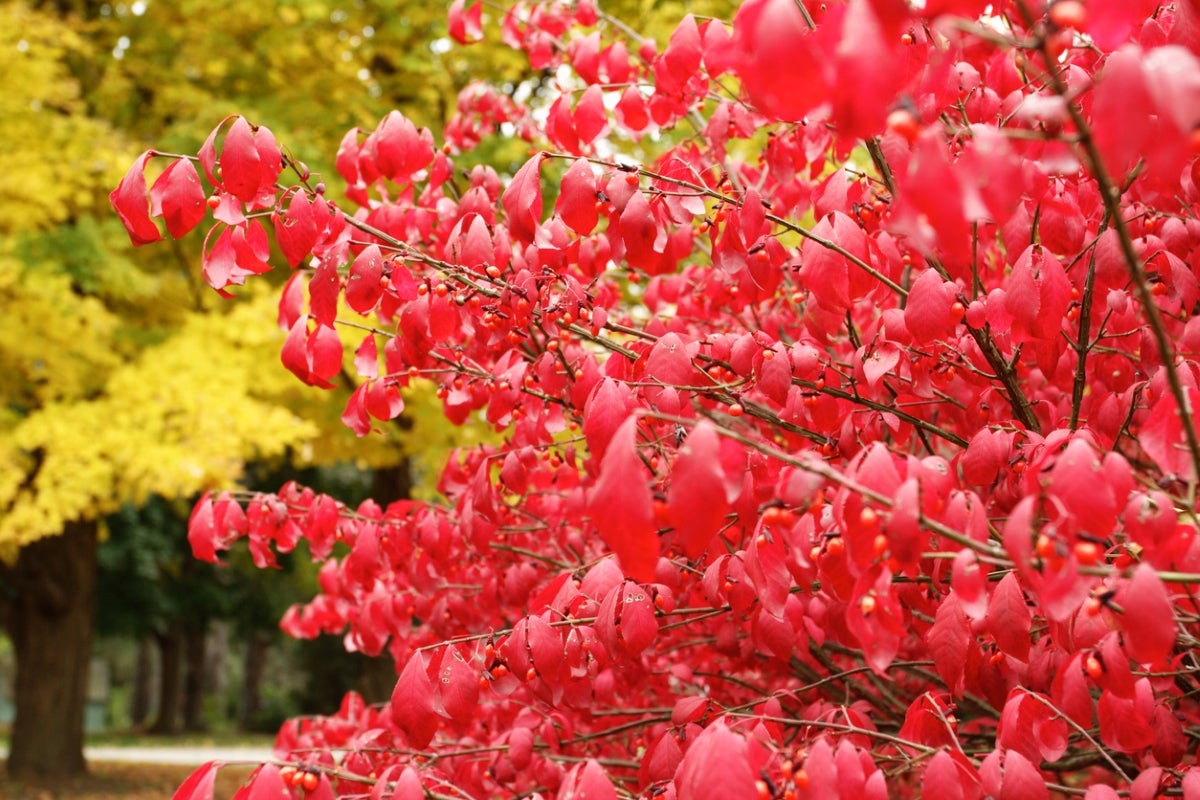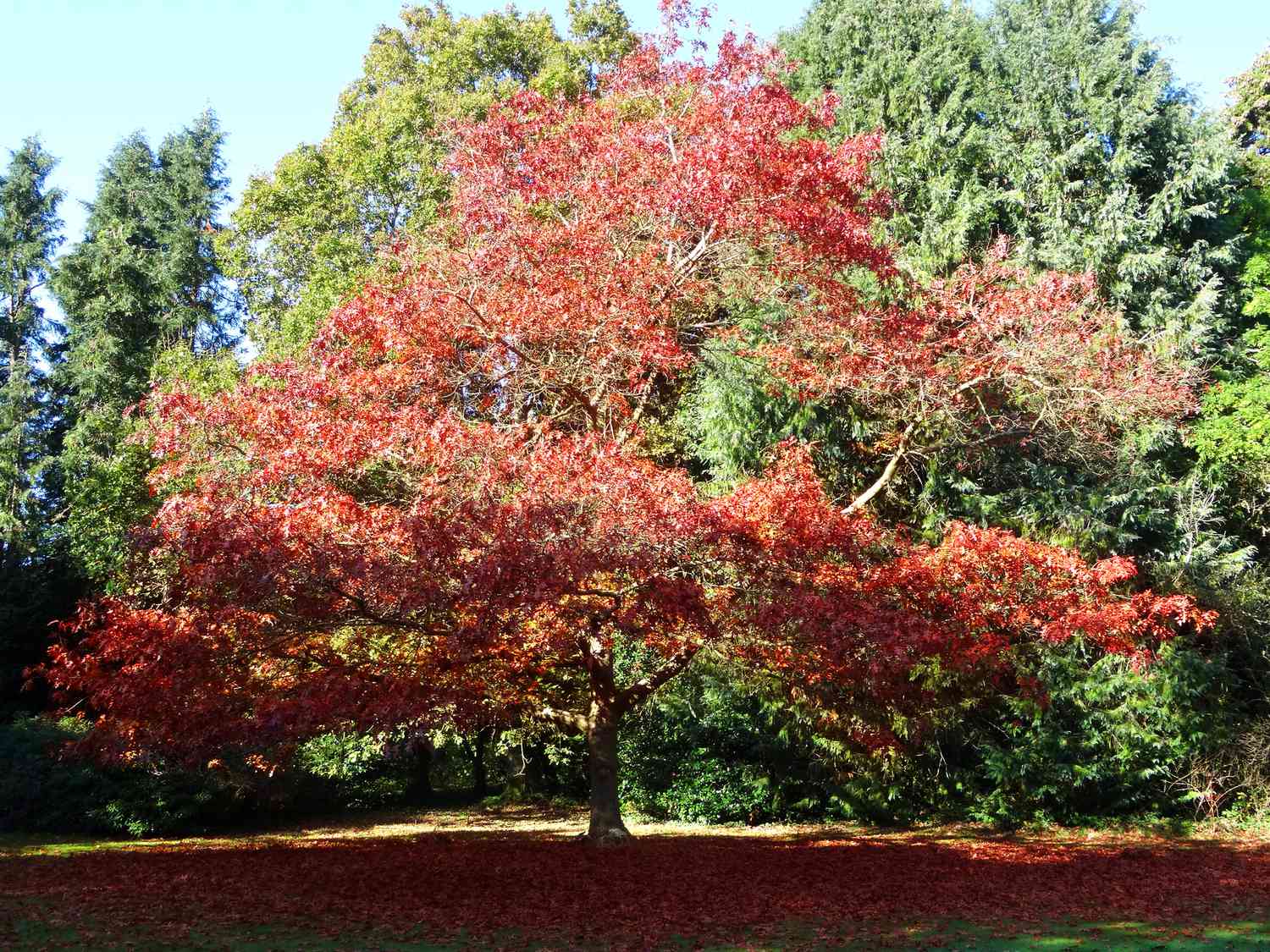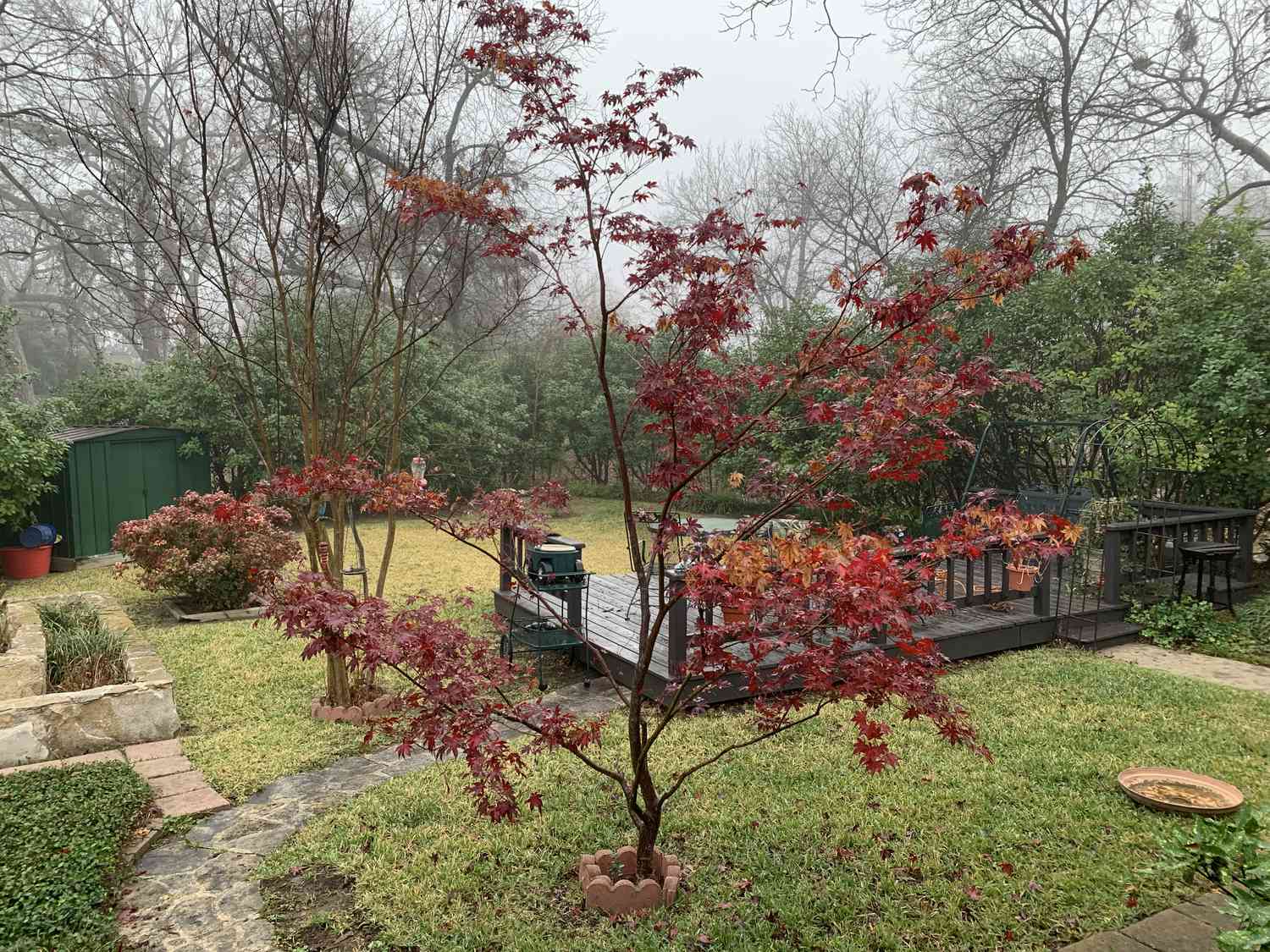Home>Gardening Techniques>Seasonal Gardening>What Trees Leaves Turn Red In The Fall
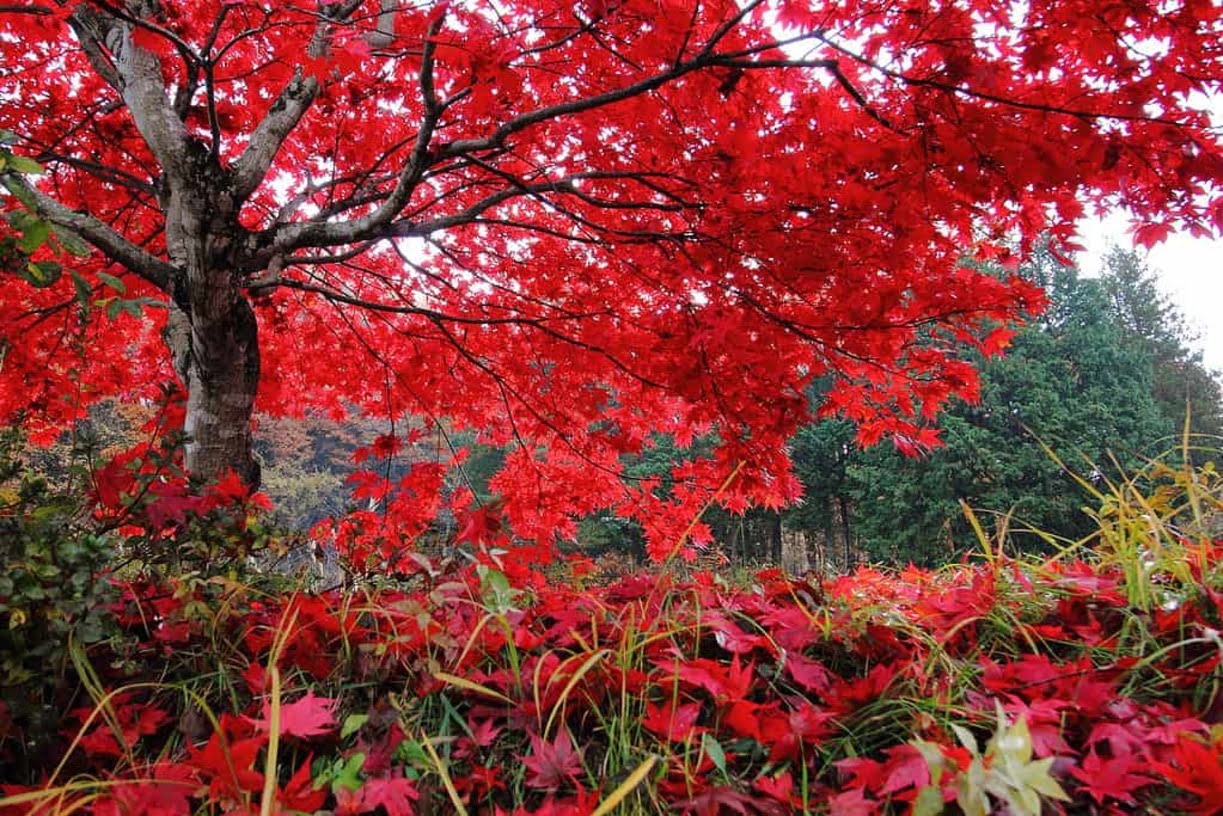

Seasonal Gardening
What Trees Leaves Turn Red In The Fall
Published: November 4, 2023
Discover which trees turn red in the fall and enhance your seasonal gardening with vibrant hues.
(Many of the links in this article redirect to a specific reviewed product. Your purchase of these products through affiliate links helps to generate commission for Chicagolandgardening.com, at no extra cost. Learn more)
Table of Contents
Introduction
As the summer days start to fade away and the cool, crisp air of autumn sets in, nature begins its breathtaking transformation. One of the most captivating sights during the fall season is the vibrant display of colors that adorn the trees. From fiery reds to golden yellows, the changing foliage creates a picturesque scene that enchants us year after year.
Fall foliage, with its stunning red hues, has a special allure that evokes feelings of warmth and nostalgia. It’s a symbol of transition, reminding us that change is inevitable and can be beautiful. Whether you’re an avid gardener, nature enthusiast, or simply enjoy the beauty of the outdoors, understanding the factors that influence autumn color and the trees that showcase these captivating red leaves can deepen your appreciation for this seasonal phenomenon.
In this article, we will explore the factors that influence fall color, delve into the trees known for their red fall foliage, and uncover the significance of these red leaves in the grand spectacle of autumn.
Factors that Influence Fall Color
The vibrant colors of fall foliage are not purely random. They are influenced by a combination of environmental factors, including temperature, light, and moisture. Understanding these factors can help us predict and appreciate the stunning colors that autumn brings.
Temperature plays a crucial role in the development of fall colors. As the days grow shorter and temperatures start to drop, trees respond by producing less chlorophyll, the pigment responsible for their green color. This decrease in chlorophyll allows other pigments, such as the anthocyanins that give leaves their red color, to become more visible.
Light also affects the intensity and duration of fall colors. Bright, sunny days combined with cool temperatures promote the production of anthocyanins, leading to more vibrant red leaves. Conversely, cloudy and overcast conditions can result in less vibrant colors as the production of pigments is hindered.
Moisture levels in the soil also influence fall color. Adequate moisture is essential for trees to have a balanced nutrient uptake, which affects the pigments produced in the leaves. Drought conditions can cause leaves to turn brown or drop prematurely, dampening the brilliant display of autumn colors.
Additionally, the genetic makeup of each tree species plays a role in the colors they exhibit. Some tree species naturally have a predisposition for vibrant red leaves, while others tend to showcase yellow or orange hues. Understanding these variations can help gardeners select and cultivate trees that will produce the desired fall colors in their landscapes.
It’s worth mentioning that while these factors have a general influence on fall color, variations can occur depending on location and climate. Each autumn season is unique, offering its own palette of colors that are influenced by the specific environmental conditions experienced that year.
Trees with Red Fall Foliage
When it comes to trees with striking red fall foliage, nature has blessed us with a variety of options. These trees add a vibrant burst of color to any landscape, creating a focal point that captures the essence of autumn. Let’s explore some of the most beloved trees known for their beautiful red leaves during the fall season.
1. Red Maple (Acer rubrum): The Red Maple is renowned for its brilliant red fall foliage. Its leaves transition from green to shades of red, orange, and yellow, painting the landscape in a fiery display. This tree is hardy and adaptable, making it a popular choice for landscaping.
2. Sugar Maple (Acer saccharum): The Sugar Maple is synonymous with autumn beauty. Its leaves turn vibrant shades of red, orange, and yellow, creating an awe-inspiring scene. Along with its stunning fall color, the Sugar Maple is also known for producing delicious maple syrup.
3. Scarlet Oak (Quercus coccinea): The Scarlet Oak lives up to its name with its deep red fall foliage. Its leaves turn scarlet, creating a striking contrast against the blue sky. This oak tree is known for its durability and ability to thrive in a variety of soil conditions.
4. Dogwood (Cornus florida): The Dogwood tree adds a touch of elegance to any landscape, especially during the fall season. Its leaves turn shades of deep red and purple, showcasing its unique beauty. Additionally, the Dogwood tree produces attractive red berries, adding to its appeal.
5. Japanese Maple (Acer palmatum): The Japanese Maple is highly revered for its graceful appearance and stunning fall foliage. Its leaves can turn various shades of red, including vibrant crimson and burgundy. This compact tree is often used as a focal point in gardens and provides a captivating display of color in the fall.
These are just a few examples of trees with red fall foliage. There are many other varieties, including the Eastern Redbud, Shagbark Hickory, and Black Tupelo, that exhibit shades of red during the autumn season. Planting these trees in your garden or incorporating them into your landscape design can create a visual spectacle that will leave you in awe.
Significance of Red Leaves in Fall
The vibrant red leaves that grace the trees during autumn hold a deep significance in the cycle of nature and evoke a sense of wonder and beauty. Here are some of the meanings and symbolic associations attached to the red leaves in fall:
1. Transition and Change: As the seasons transition from summer to winter, the red leaves symbolize the changing stages of life. They serve as a reminder that change is an intrinsic part of nature and can be embraced with grace and beauty.
2. Passion and Vitality: Red is often associated with passion, energy, and vitality. The fiery red leaves represent the vibrant life force within nature. They remind us to live life to the fullest and embrace our own passions and desires.
3. Warmth and Comfort: The warm, earthy hues of red leaves create a cozy and comforting atmosphere. As the temperatures begin to cool, the red foliage provides a visual warmth that adds to the charm of the fall season.
4. Harvest and Abundance: Fall is a time of harvest and abundance, and the red leaves symbolize the fruitful bounty of nature. They represent the rich rewards of hard work and the abundance of the harvest season.
5. Connection with Nature: The sight of red leaves in fall connects us to the natural world and reminds us of the interconnectedness of all living beings. It beckons us to appreciate and protect the beauty of the environment we inhabit.
6. Aesthetic and Visual Delight: Above all else, the red leaves in fall are simply a visual marvel, captivating our senses and offering a feast for the eyes. Their stunning beauty brings joy and awe to those who witness their vibrant displays.
Whether you enjoy leisurely walks in nature, find solace in gardening, or simply appreciate the beauty of the changing seasons, the significance of red leaves in fall resonates with all of us. It’s a reminder to embrace change, find passion in life, and appreciate the bountiful wonders of the natural world.
Conclusion
The red leaves that adorn the trees during the fall season are a testament to the beauty and intricacy of nature. From the fiery hues of the Red Maple to the deep scarlet of the Scarlet Oak, these trees with red fall foliage captivate our senses and evoke a sense of wonder.
We have explored the factors that influence fall color, understanding how temperature, light, moisture, and genetics play a role in the creation of these vibrant hues. The significance of red leaves in fall goes beyond their aesthetic appeal. They represent transition, passion, vitality, and the abundant harvest season. They serve as a reminder to embrace change, appreciate the interconnectedness of all living beings, and find beauty in the natural world around us.
As seasons transition and nature bids farewell to summer, the arrival of red leaves in fall is a spectacular sight to behold. Whether you are a gardener planning your landscape or simply a lover of nature’s beauty, exploring and appreciating the trees with red fall foliage adds a touch of enchantment to your outdoor experience.
So, next time you find yourself strolling through an autumn landscape or gazing out your window at the changing trees, take a moment to appreciate the significance and beauty of the red leaves. Their vibrant colors remind us of the ever-changing nature of life and the mesmerizing wonders that surround us.
Embrace the magic of fall and let the red leaves inspire you to embrace change, find beauty in every season, and cherish the natural world that surrounds us all.
